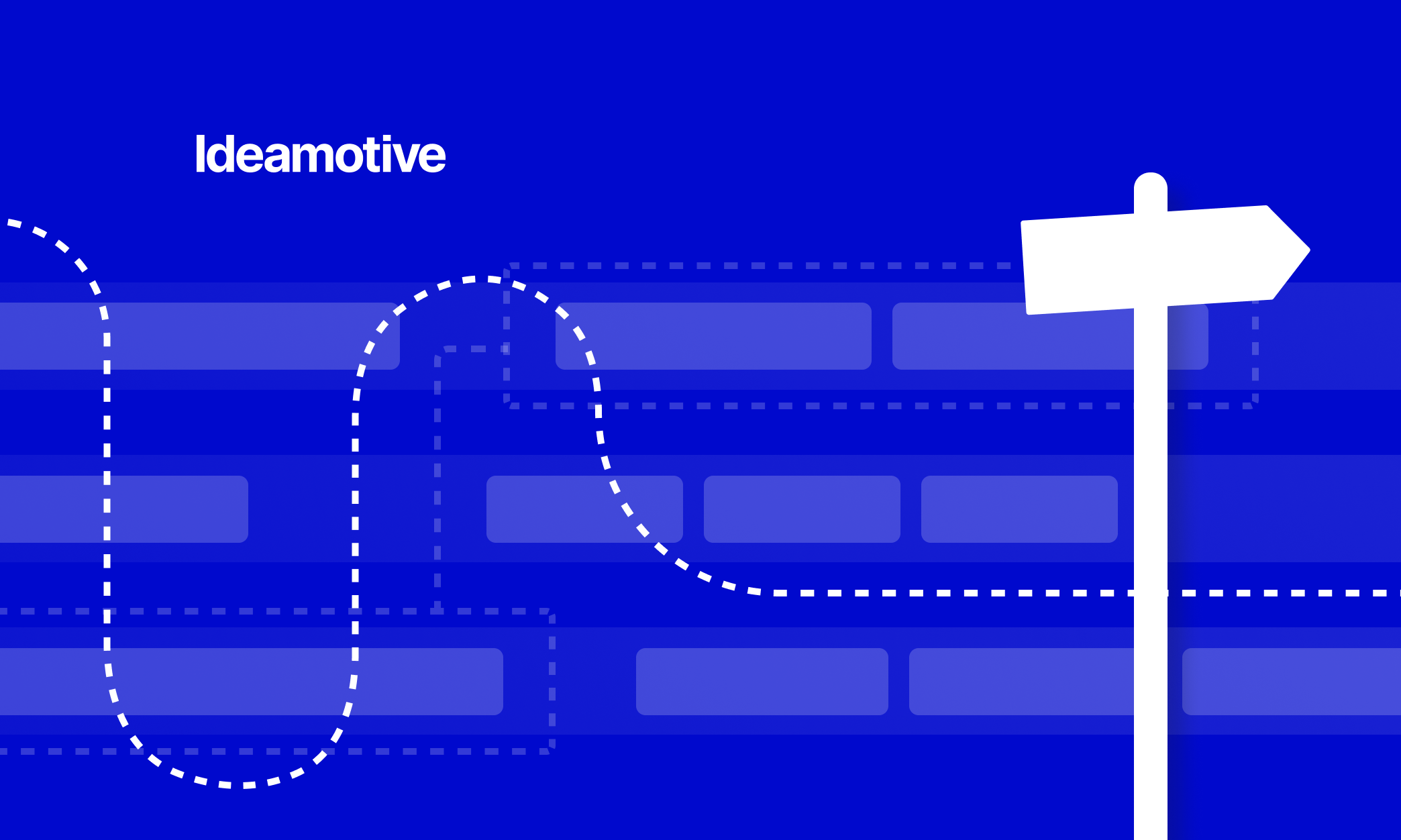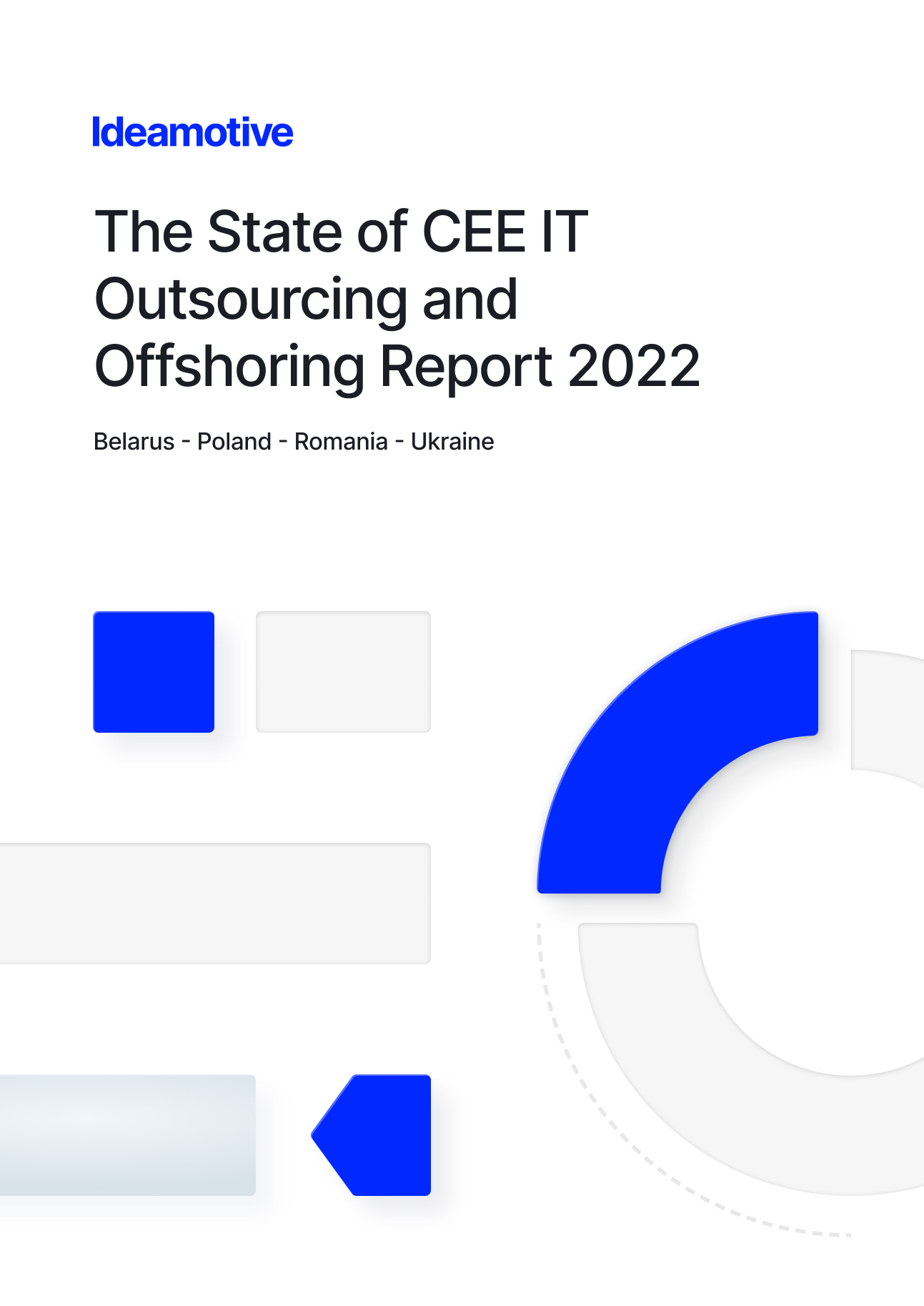Having a product roadmap is very important for managing product development. However, in order to correctly draw up a roadmap, it is necessary to approach this issue systematically. It is very important not to confuse a roadmap with a vision, although having a vision is necessary in order to properly build a roadmap.
What is a long-term product roadmap?
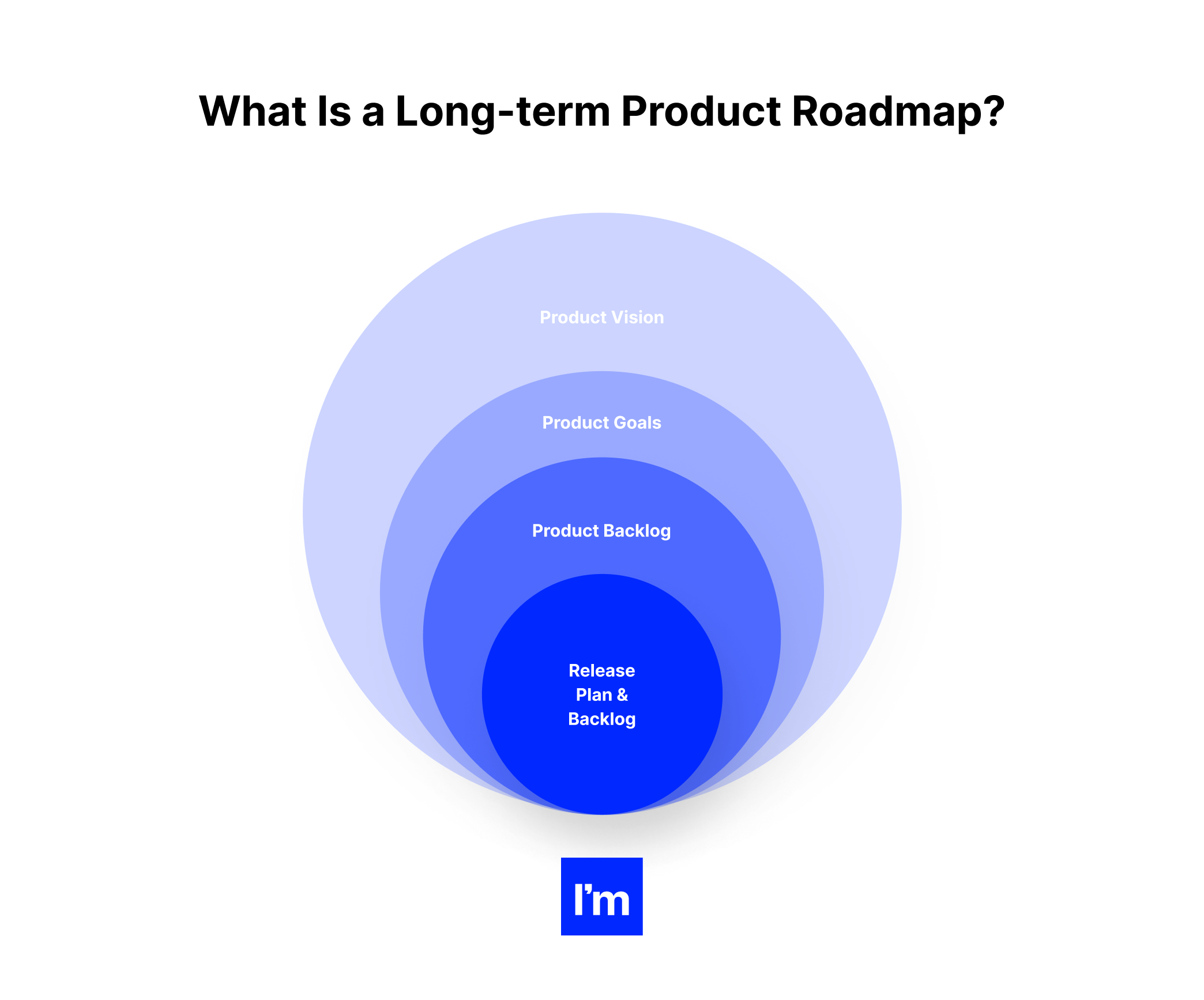
In fact, a roadmap is a visualization tool for a company's development strategy, project launch stages, and product promotion. It is a document or graphic file that describes the main steps necessary to achieve the goal.
The head or a product manager is responsible for the creation and implementation of the product, which ensures the interaction between team members and monitors compliance with intermediate deadlines for completing tasks.
Why do we need a roadmap?
The roadmap is used to coordinate work between departments, show investors the stages and deadlines for completing tasks, and help team members better understand the process of achieving goals. It is also used by team leaders and CEOs, sales departments, and customer support services.
A product roadmap is created before the launch of the project to visualize the competitive development strategy, as well as after the launch if there have been fundamental changes in the work. IT Product Managers develop roadmaps for a quarter, half a year, and even a year. They include such information as goals and objectives, stages of work and their priority, and main deadlines.
Unlike a marketing plan, a roadmap displays long-term strategies and goals, rather than a detailed description of the work process with employee requirements and deadlines for each task. The roadmap is a “living document” that can change, so you need to appoint a person responsible for updating it.
Since the roadmap is necessary to coordinate the work between all participants in the business process, it is important to make it understandable and accessible. That is why the roadmap is most often created in the form of a table, which makes it easy to scan information regardless of the number of stages and the complexity of the project.
Core product roadmap components
Measurable goals
There are different formulations of the goal of the roadmap:
- development of a concept, strategy (strategic documents), scenario, plan, visualization of a product management plan, program, and project portfolio;
- targets, indicators, expected results (benchmarks);
- long-term goals of the planning object for each of the releases;
- identification of critical factors (stages), identification of key points of application of efforts, optimization of decisions;
- creating a vision of the future, developing forecasts;
- the goal as the transition of the planning object from the initial to the specified state.
It is possible to represent the goal as a set of subgoals, a limited number of goals.
Initiatives (high-level themes)
This component describes the dependence of the result on the action. The product roadmap shows how specific releases and features relate to your strategy.
Releases
Releases are made to introduce new product functionality. This component contains multiple features at once.
Epics (categories)
Epics are large volumes of work (such as categories) that typically span multiple episodes. They are known for being smaller than releases. In other words, they add smaller features gradually.
Features
The feature is a specific piece of new or improved functionality that provides value to users. The list of features may contain:
- capabilities,
- components,
- appearance,
- performance.
Timeline
A timeline is a work plan with accurate rates and lead times. The timeline can vary from days to quarters or years. Web Project Managers set the timeline depending on the amount of work associated with a particular release.
Step-by-step long-term product roadmap crafting
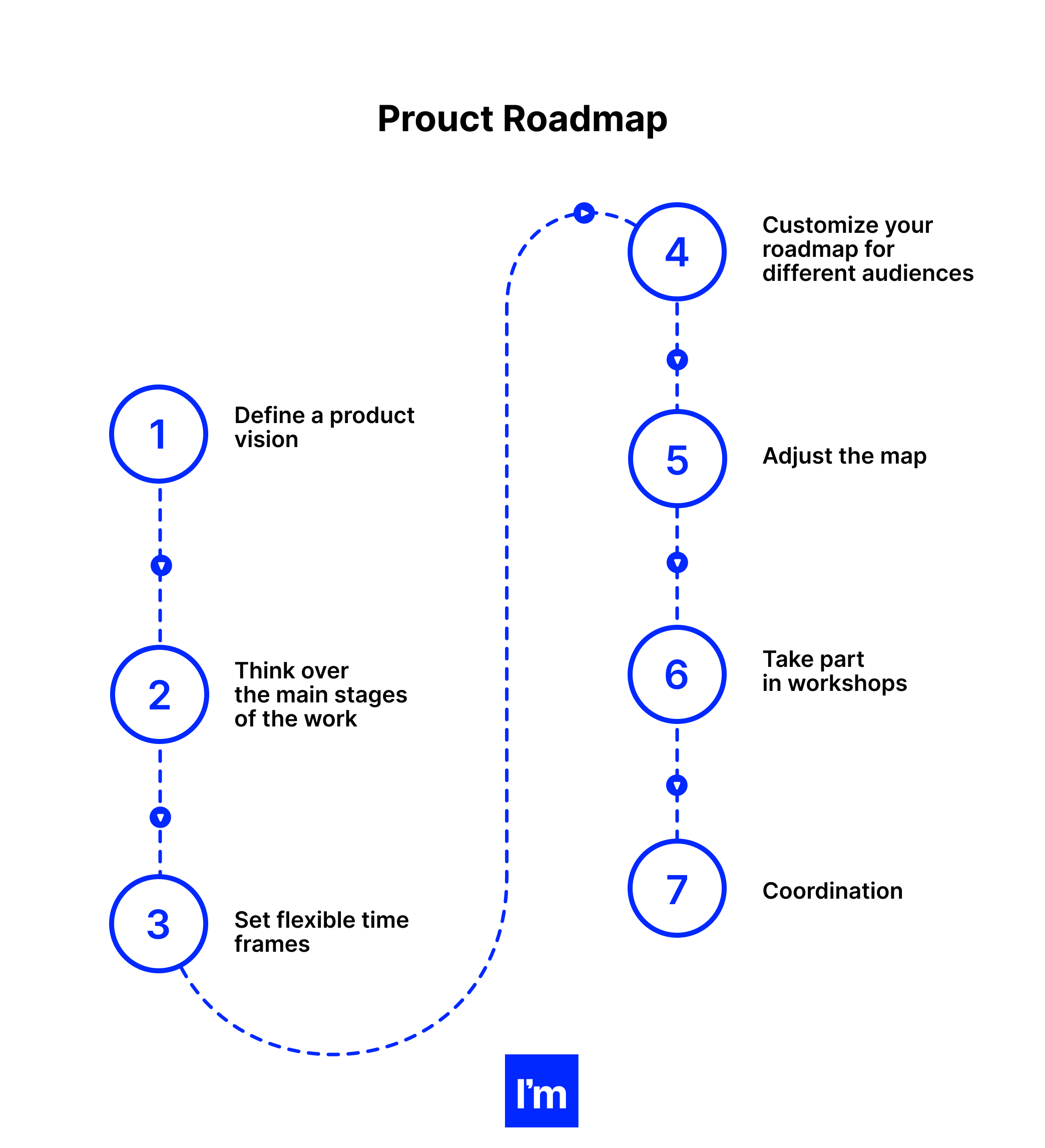
A roadmap clearly shows the development strategy of a project, product, or company. This tool is indispensable for a product and software project manager but insidious: if used incorrectly, you can confuse the team, and waste time and money.
To avoid such troubles we have prepared a universal instruction that will help 100% you.
Step 1: Define a product vision
Here are the key questions you need to ask yourself and your team as you start developing/updating a product:
- Why do you need a product, and what problem does it solve?
- Who is its target audience?
- What products will it compete with?
- Why is work on this product a priority now?
If you can’t answer these questions (ideally with data to back up what you say), you have no reason to spend company resources on this product.
The company advises approaching the preparation of responses seriously: analyze customer reviews, and request information from the sales department. If necessary, conduct market research.
It's amazing how many product managers, even experienced and talented ones, skip this first step when they're in a rush to get the roadmap up and running before meeting with stakeholders. But believe us: if you are not ready to prove the need for your product, this meeting will not end well for you.
Step 2: Think over the main stages of the work
For example, you want to develop an app for an online real estate crowdfunding resource using React Native. In this case, the tasks might sound like this:
- set related tasks to your React Native developers,
- allow investors to register on the platform and manage their investment portfolio,
- enable product leads to launch fundraising campaigns and control the funding process.
Each task can be divided into several components, but it is not worth prescribing detailed instructions for their implementation. Remember that a roadmap is not a backlog. It should answer the question “Why are we developing a product?”, not “How are we developing it?”.
Tasks are named differently in different online roadmapping tools. In those that are tied to the agile methodology, large tasks are usually called epics, smaller tasks are called stories. But the principles of work are similar everywhere: you need to prioritize tasks and distribute them on the time axis.
Do not get attached to exact dates: the main thing is to be clear on which tasks you need to start working on right now, and which ones can be postponed. Do not be afraid to make a mistake - if priorities change, they can be swapped.
Step 3: Set flexible time frames
A roadmap is no place for hard deadlines.
“By setting specific release dates, you are holding your team hostage to commitments that they most likely won’t be able to meet,”
says Clever PM, product manager, and blogger Cliff Gilley.
The more ambitious your goals, the wider the time frame should be. For example, in September 2020, IBM published a roadmap for the development of a computer with a capacity of more than 1 thousand qubits by 2023. According to forecasts, it will be able to do the most complex computational operations, inaccessible to any of the existing machines.
On the timeline, the company noted intermediate products: a computer with a capacity of more than 100 qubits in 2021, and more than 400 qubits in 2022.
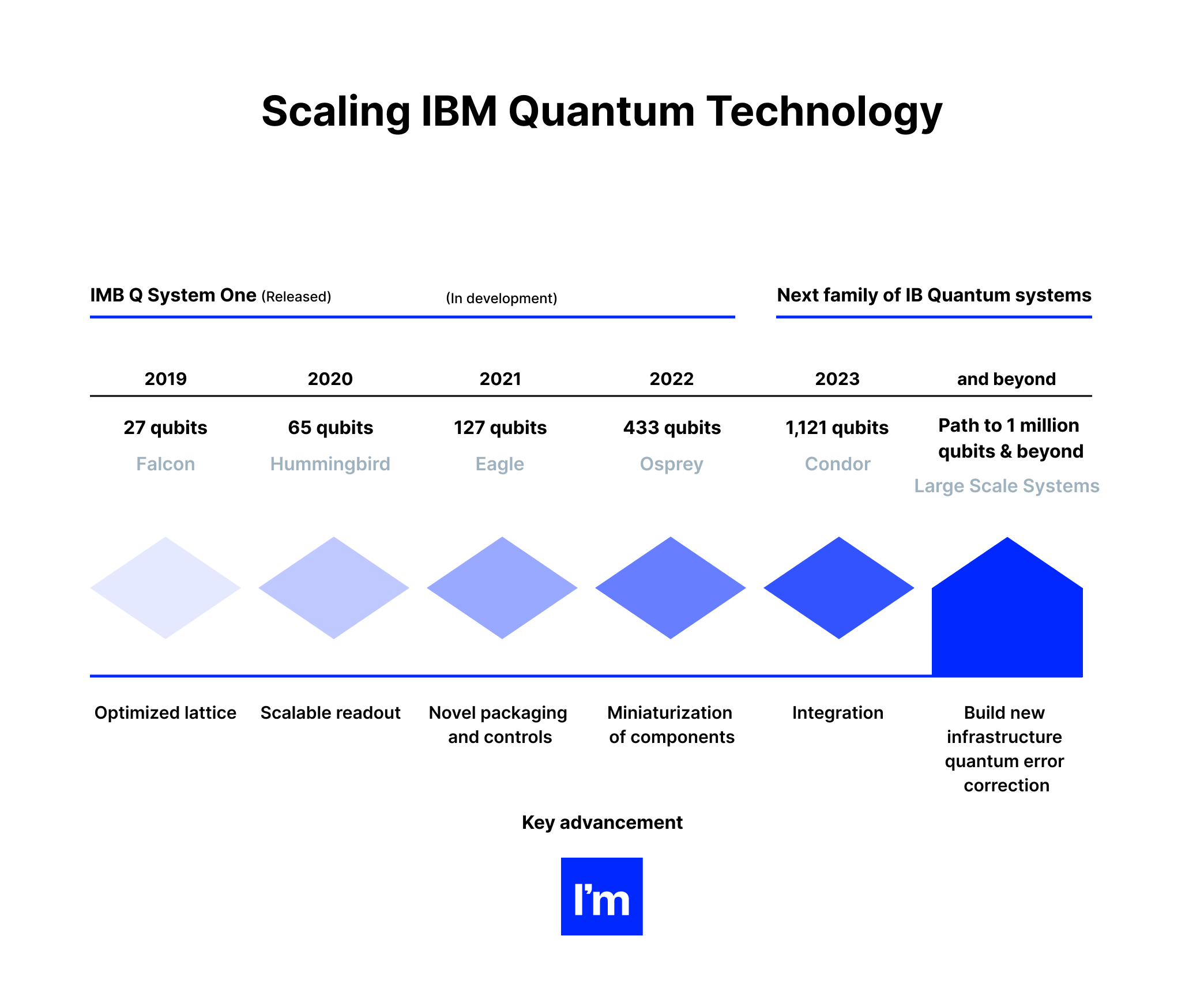
It is noteworthy that a more global goal is also stated in the roadmap - a quantum system with a capacity of more than 1 million qubits. But the year of its creation is not even approximately indicated: according to IBM, it is too early to make such predictions.
Step 4: Customize your roadmap for different audiences
Each stakeholder group has different roadmap requests, so showing everyone the same option is a bad idea.
- The leaders of the company in the product roadmap want to see how it will help increase market share and increase revenue.
- The sales department and marketers are interested in the strengths of the product, which will promote it in the market.
- For the product team, the most important things are technology, organization of work, and approximate deadlines.
- A special case is an "external" roadmap for customers, which can be published on the company's website. It should be as clear and understandable as possible.
A good example is the 10-year Facebook product roadmap published in 2016.
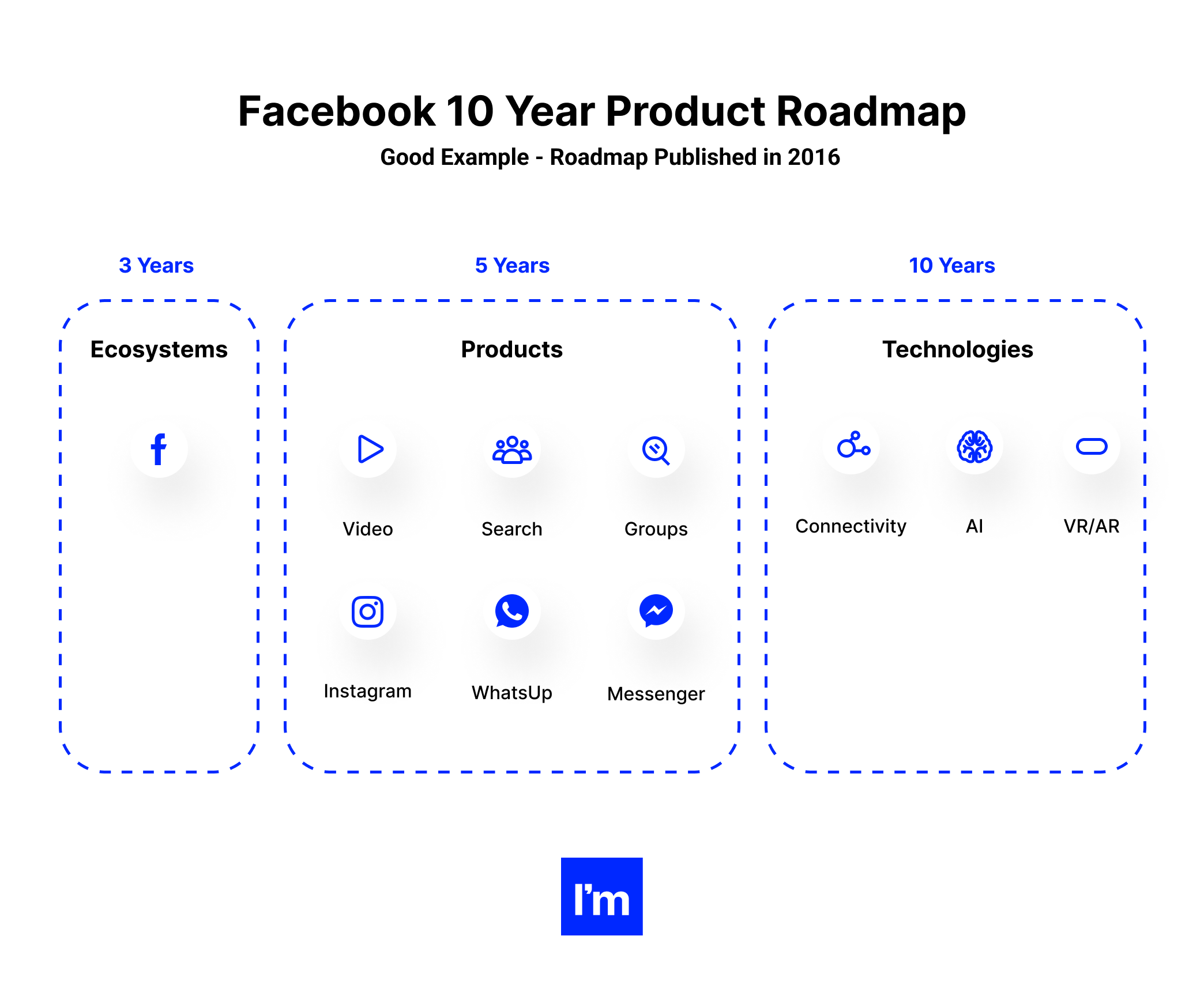
There is no need to make several separate roadmaps. In specialized IT project management tools (ProductPlan, Roadmunk, Aha, Prodpad and Roadmap Planner), you can simply set up different detail options for each audience.
Step 5: Adjust the map
A roadmap is not a strict plan of action that must be completed at any cost. It is rather a "living" document that should be adapted to the conditions.
For example, at the beginning of the COVID-19 pandemic, Facebook had to throw all its efforts into combating the spread of misinformation about the coronavirus. And then - to support calls to Facebook Messenger and broadcasts to Facebook Live, the use of which during the quarantine has doubled.
“It was a unique moment when we had to seriously change our roadmap at short notice,” says Facebook app head Fidji Simo.
Force majeure aside, there are different views on how often the roadmap should be adjusted.
Supporters of the agile methodology believe that this can be done at least once a week, constantly analyzing the situation in the market and customer expectations. And adherents of more rigid planning are sure that too frequent changes in strategy can confuse the team, so it is optimal to make changes once a quarter.
“One way or another, it is desirable that only one employee has the right to edit the map. This will help avoid unnecessary confusion,” says Todd Olson, CEO of software company Pendo.
Step 6: Take part in workshops
Another good decision would be to attend specialized workshops. Such meetings are being held more and more frequently. Practitioners and theorists, experts and innovators, experienced funding consultants and seasoned project managers speak at them.
Here is how your product strategy can benefit from it:
Learn something new
No matter how super pro you are, there will always be something that you didn't know about, or knew about but applied incorrectly, or correctly, but not very effectively. In general, there is no limit to perfection. New knowledge never hurts anyone.
Indeed, why not find out something new about the most common IT project management pitfalls, how to use AI in project management, or data-based project management insights?
Even if you learned only one important thought from the two-day workshop, that's already great. One day, this knowledge will certainly come in handy.
Get quality assistance
There are technical talent marketplaces that help Product Managers around the world by providing them with the finest developers. They also run workshops to help PMs create their roadmaps. So you get estimates while hiring candidates matched with your product and industry.
For example, here you can meet experienced PMs, seasoned Ruby on Rails devs, and vetted React engineers. This will allow you to significantly expand your circle of useful acquaintances. Attending these meetings is an important part of networking.
When chosen correctly, such workshops can help you estimate the costs, how many developers, and other resources are needed.
Step 7: Coordination
Before showing the result to the stakeholders, it is worth discussing it with the performers. You need complete confidence that there are enough resources to achieve the goal.
The theory is good but an illustrative example is even better! Please find the link to a downloadable, step-by-step product roadmap template and checklist!
What makes an effective roadmap?
An effective roadmap is based on the business context:
Vision and strategy
Vision describes the concept of the endpoint that the company is moving towards. A strategy is a plan: how and with what help the company will get to this point.
Business goals with their priorities
Teams do not focus on features, projects, ideas, or initiatives, but on specific business results.
- Example 1: Expand product user segments by 12% or reduce new user churn by 4%.
- Example 2: Increase conversion to feature use by up to 30%, reduce user request processing time to 3 seconds.
- Example 3: Reduce the activation time for new users to 1 day.
It is important to understand that it is the responsibility of management to provide teams with business goals.
Pro managers have quarterly planning, annual focuses, and a strategy for three years. But this is not the case everywhere. If you are not getting specific goals from the business, you will need to convince the business that it needs to set goals for you.
It's best when teams get business goals, but they decide on their own solutions to achieve those goals. In this case, they are much more motivated to achieve them. This is also beneficial for business because the team will no longer be able to give out some kind of feature and say:
“We were told to make such a feature, so we did it. And we are not responsible for the business result.”
How product roadmaps are used by other teams?
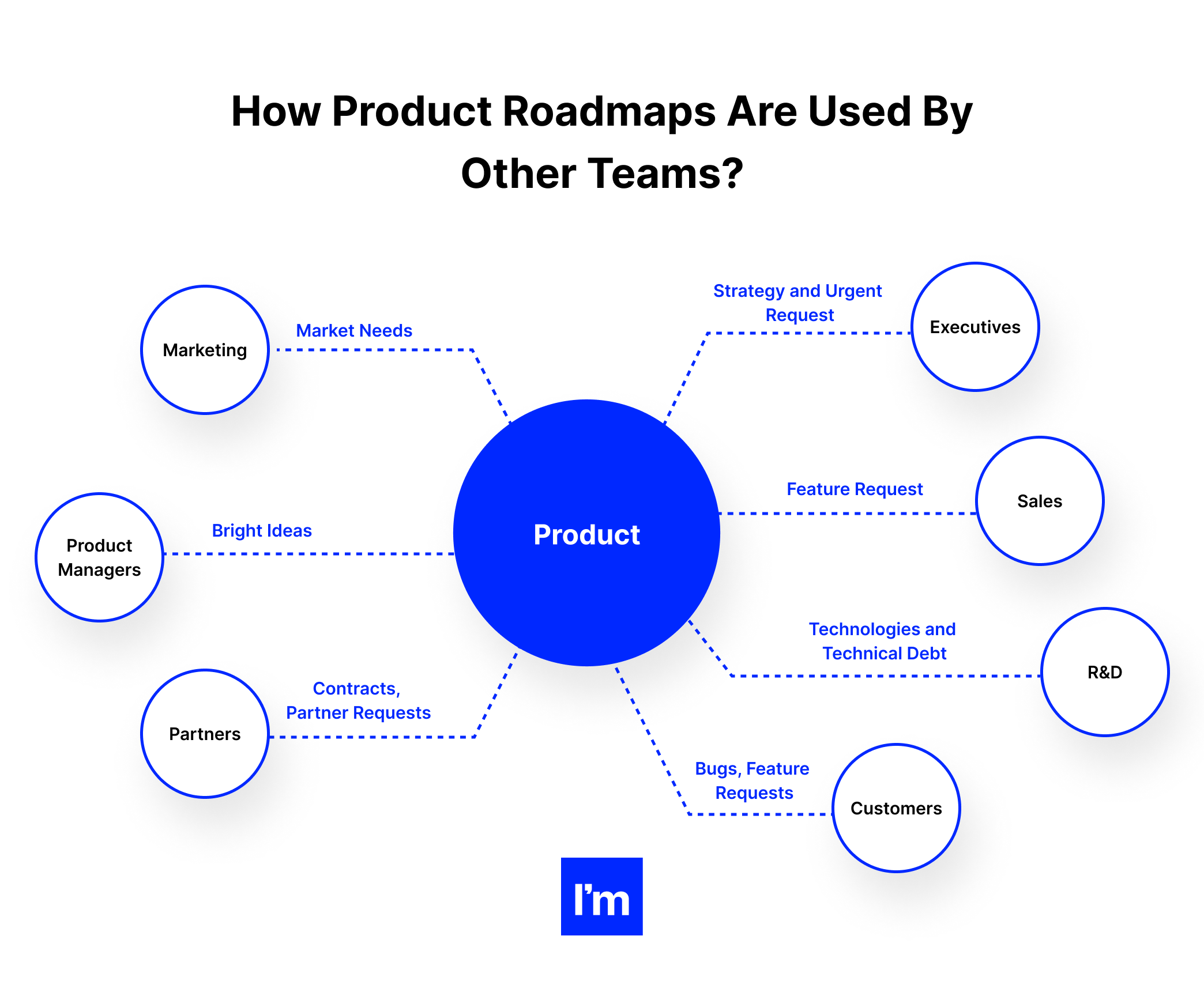
The product roadmap brings value to all the teams. Here is how each one treats this document:
- Development team. These employees see the reflection of the prospects for improving the material and technical base. What's important for them is the information about the current state of affairs and planned changes.
- Marketing. The roadmap shows what and how the promotion team is striving for.
- HR department. With the help of such a map, the HR manager shows the management the need for new personnel in the near future.
- Clients. The document shows available services and products, development prospects, and the benefits of ongoing cooperation.
- Sales managers. Gives sales managers a clear idea of what is expected of them by the deadlines within the current strategy.
- C-level. The scheme shows the tasks assigned to all departments of the company. With the help of it, they can estimate a development cost.
A product roadmap should not be confused with a backlog, management system, or list of activities. A roadmap is not a detailed specification. Rather, it can be called a reminder for the target audience. First of all, it sets priorities and shows the goals that the company plans to achieve in the allotted time.
Key takeaways
- The roadmap displays the main and intermediate goals, the timing of their implementation, the expected economic effect, and other basic indicators.
- There are different levels of detail. The method of presenting the material largely depends on the addressee, which is the consumer, investor, customer, or a team of performers.
- Changes can be made to the map if the situation requires it.
- For design, both publicly available programs and paid online services are suitable.
This document can be very confusing, both for those who want to create a product roadmap and for the people it targets. Do not try too hard when developing it or consider it only as a strict plan of action.
The map is intended primarily to facilitate understanding or ensure consistency within the team. It should convey the shared vision and values of the leader or employees.
Feel like this task is too complicated for you today? Look for specialized companies that can help in creating it during workshops. Another reason to cooperate with such firms is that you can find all other resources you might need for your product.
Such tech talent marketplaces are your all-in-one solution!
